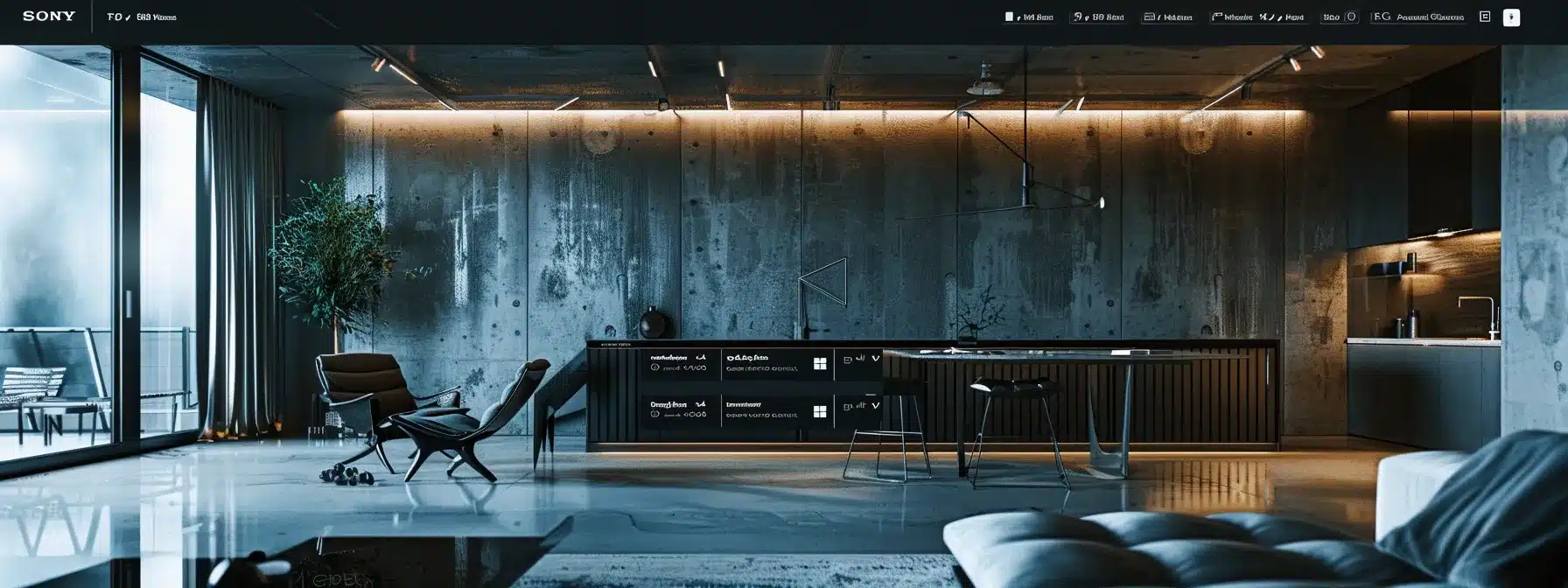Are you struggling to turn website visitors into customers? You’re not alone. Many eCommerce brands face this challenge, and the solution often lies in effective UI design. In this post, you’ll discover essential UI design principles that can significantly boost your conversion rates, including intuitive navigation and compelling calls to action. By implementing these strategies, you’ll enhance user experience and drive more sales through your creative services. Let’s tackle the pain points of low engagement and high bounce rates together, ensuring your brand stands out on platforms like the Finch homepage and through social media advertising.
Understanding the Role of UI Design in Conversion Rates

UI design significantly influences user behavior and decision-making, directly impacting conversion rates. You will learn how to identify common UI pitfalls that can reduce conversions, leverage psychological principles for effective design, and explore real-world examples such as social media advertising and amazon ads demonstrating the connection between UI and customer experience. Each of these aspects plays a crucial role in enhancing readability and optimizing email marketing efforts.
How UI Design Influences User Decisions
UI design plays a pivotal role in shaping user decisions throughout the conversion funnel. By implementing effective personalization strategies, you can create a tailored experience that resonates with your audience, whether they are browsing on a web page or a mobile device. A well-placed call to action, combined with intuitive design elements and creative services, guides users seamlessly toward making a purchase, ultimately boosting your conversion rates through social media advertising.
Identifying Common UI Pitfalls That Reduce Conversions
Identifying common UI pitfalls is essential for improving conversion rates. Poor interaction design can lead to confusion, causing customers to abandon their journey before completing a purchase. Understanding the measurement of user engagement through effective methodologies such as creative services and social media advertising allows you to pinpoint these issues, ensuring that your design aligns with customer expectations and enhances their overall experience.
- Recognize the impact of poor interaction design on user behavior.
- Utilize measurement techniques to assess user engagement.
- Implement methodologies that align with customer needs.
Leveraging Psychology for Effective UI Design
Leveraging psychology in UI design can significantly enhance your advertising campaign’s effectiveness by aligning with user motivation and decision-making processes through social media advertising. By crafting a compelling value proposition, you can create a sense of urgency or exclusivity that drives lead generation via demand side platforms. Testing different design hypotheses, such as button colors or placement, allows you to discover what resonates best with your audience, ultimately leading to higher conversion rates with amazon ads.
- Understand user motivation to tailor your design effectively.
- Create a strong value proposition that captures attention.
- Test design hypotheses to optimize user engagement.
Real-World Examples of UI Impacting Conversion Rates
Real-world examples illustrate how effective user interface design can significantly enhance customer satisfaction and drive conversion rates. For instance, a well-known eCommerce brand revamped its finch homepage prototype by simplifying navigation and incorporating usability testing feedback, resulting in a 30% increase in sales. By focusing on user experience and utilizing creative services, they created a seamless journey that not only met customer needs but also encouraged repeat purchases, showcasing the direct link between thoughtful UI design and improved conversion outcomes.
UI design shapes how users feel and act. Now, let’s explore the key principles that can drive those conversions higher.
Essential UI Design Principles for Higher Conversions

To maximize conversion rates, focus on essential UI design principles that directly impact user behavior. Applying visual hierarchy helps highlight key actions, reducing cart abandonment. Enhancing readability through strategic use of white space minimizes cognitive load, while consistent design elements build trust. Additionally, ensuring mobile responsiveness broadens your reach, making your marketing strategy more effective and improving return on investment.
Applying Visual Hierarchy to Highlight Key Actions
Applying visual hierarchy is essential for guiding your target audience toward key actions that drive conversion rate optimization. By strategically using size, color, and placement, you can emphasize important elements like call-to-action buttons, making them stand out in a crowded interface. Conducting user research can provide insights into how your audience interacts with your design, allowing you to refine these elements for maximum impact and ensure that your expert strategies resonate effectively with potential customers.
Enhancing Readability With Strategic Use of White Space
Enhancing readability through strategic use of white space is vital for improving usability and driving conversions. By effectively incorporating white space around graphics and text, you create a clean, organized layout that allows customers to focus on key elements, such as the cart and call-to-action buttons. This clarity not only reduces cognitive load but also fosters customer retention and increases customer lifetime value, as users are more likely to engage with a visually appealing and easy-to-navigate interface.
Building Trust Through Consistent Design Elements
Building trust through consistent design elements is crucial for enhancing visibility and user confidence in your brand. By maintaining uniform typography, color schemes, and layout across your platform, you create a cohesive experience that resonates with users. Qualitative research can provide insights into how these design choices impact user perception, allowing you to leverage this knowledge to foster a trustworthy environment that encourages conversions.
Ensuring Mobile Responsiveness for Broader Reach
Ensuring mobile responsiveness is essential for enhancing user experience design and maximizing revenue. A well-optimized mobile interface allows for seamless navigation, making it easier for users to access information quickly and efficiently. By conducting thorough analysis and refining your information architecture, you can create a mobile experience that not only meets user expectations but also drives higher conversion rates.
- Focus on mobile responsiveness to enhance user experience.
- Optimize navigation for quick access to information.
- Conduct analysis to refine information architecture.
- Drive revenue through effective mobile design strategies.
Good design leads users where they need to go. Next, we’ll explore how intuitive navigation can make that journey effortless.
Designing Intuitive Navigation to Guide Users

Simplifying navigation menus is essential for easy access, enhancing customer engagement with your brand. You will learn how breadcrumbs improve user orientation, search functions streamline the experience, and effective internal linking reduces complexity. Each of these concepts plays a vital role in guiding users above the fold, ensuring they find what they need quickly and efficiently.
Simplifying Navigation Menus for Easy Access
Simplifying navigation menus is crucial for enhancing user experience and driving conversions on your landing page. By employing quantitative research to analyze user behavior, you can optimize the architecture of your site, ensuring that key elements align with your value proposition. A streamlined menu not only reduces cognitive load but also guides users effortlessly toward their desired actions, ultimately improving your overall conversion rates.
- Utilize quantitative research to understand user behavior.
- Optimize the architecture of your site for better navigation.
- Align navigation elements with your value proposition.
- Streamline menus to reduce cognitive load.
- Guide users toward desired actions effectively.
Enhancing User Orientation With Breadcrumbs
Enhancing user orientation with breadcrumbs is a powerful strategy for improving accessibility and guiding users through your site’s hierarchy. By providing a clear path back to previous pages, breadcrumbs capture attention and create a sense of pleasure as users navigate your content. This simple yet effective design element not only helps users understand their location within your site but also encourages them to explore further, ultimately leading to higher conversion rates.
- Breadcrumbs improve accessibility by showing users their location.
- They establish a clear hierarchy, making navigation intuitive.
- Effective use of breadcrumbs captures user attention.
- They enhance user pleasure by simplifying the navigation experience.
- Encouraging exploration can lead to increased conversions.
Utilizing Search Functions to Improve User Experience
Utilizing effective search functions is a key strategy for enhancing user experience and maximizing conversion rates. By integrating analytics and statistics into your search capabilities, you can identify common user queries and optimize results accordingly. This approach not only reduces bounce rates by helping users find what they need quickly but also fosters a more engaging experience that encourages them to explore further, ultimately driving higher conversions.
Implementing Effective Internal Linking Strategies
Implementing effective internal linking strategies is essential for enhancing user navigation and maximizing conversion rates. By strategically placing links within your content, you can guide users to related products or services, reinforcing your value proposition and encouraging deeper engagement. Utilizing web analytics allows you to track user behavior, helping you refine your internal linking structure to align with user interests and preferences, ultimately driving higher conversions.
- Utilize web analytics to track user behavior.
- Guide users to related products or services through strategic links.
- Reinforce your value proposition with effective copywriting.
- Enhance user engagement by aligning links with user interests.
- Leverage social proof to encourage exploration and conversions.
- Maintain a clear visual hierarchy to highlight important links.
With users guided through your site, the next step is to spark their interest. Compelling calls to action will turn their curiosity into clicks.
Creating Compelling Calls to Action That Drive Clicks

Writing persuasive and clear call-to-action (CTA) copy is essential for driving clicks and boosting conversion rates. You will learn how to strategically place CTAs for maximum impact, use color and contrast to make them stand out, and test different CTAs to optimize performance. These insights will enhance your content marketing efforts and improve your pageview metrics through effective data analysis.
Writing Persuasive and Clear CTA Copy
Writing persuasive and clear call-to-action (CTA) copy is essential for driving clicks and enhancing conversion rates. According to usability expert Jakob Nielsen, effective CTAs should evoke emotion and minimize friction, guiding users toward desired actions. By focusing on strong, action-oriented language and addressing user needs, you can create CTAs that serve as key performance indicators for your marketing efforts:
- Utilize strong, action-oriented language to prompt immediate responses.
- Address user emotions to create a connection and drive engagement.
- Minimize friction by simplifying the process and clarifying the next steps.
- Test different CTA variations to identify what resonates best with your audience.
Strategically Placing CTAs for Maximum Impact
Strategically placing your call-to-action (CTA) buttons is essential for maximizing conversion rates and enhancing user engagement. Positioning CTAs in high-visibility areas, such as above the fold or at the end of compelling content, can significantly increase their effectiveness, as users are more likely to notice them. Additionally, ensuring that your CTAs reflect your brand‘s credibility and reputation can instill confidence in users, making them more inclined to click, especially when backed by statistical significance in your design choices.
Using Color and Contrast to Make CTAs Stand Out
Using color and contrast effectively in your user interface can significantly enhance the visibility of your call-to-action (CTA) buttons. Eye tracking studies show that users are naturally drawn to contrasting colors, making it easier for them to identify key actions you want them to take. By selecting colors that stand out against your background, you not only capture attention but also guide users toward making decisions that can boost your conversion rates.
Testing Different CTAs to Optimize Performance
Testing different calls to action (CTAs) is essential for optimizing performance and maximizing conversion rates. By experimenting with variations in wording, color, and placement, you can identify which CTAs resonate most with your audience. For instance, a simple change from “Buy Now” to “Get Yours Today” can create a sense of urgency that drives clicks. Regularly analyzing the results of these tests allows you to refine your approach, ensuring that your CTAs effectively guide users toward taking action.
Calls to action are just the beginning. To keep those clicks coming, you must ensure your website performs well and offers a smooth experience.
Optimizing Website Performance for Better User Experience

Accelerating page load times is essential for retaining visitors and improving conversion rates. You will explore implementing lazy loading to enhance speed, understanding how site speed directly affects conversions, and ensuring cross-browser and device compatibility. Each of these strategies plays a vital role in creating a seamless user experience that encourages engagement and drives sales.
Accelerating Page Load Times to Retain Visitors
Accelerating page load times is crucial for retaining visitors and maximizing conversion rates. Research shows that even a one-second delay can lead to significant drops in user engagement and sales. By optimizing images, leveraging browser caching, and minimizing HTTP requests, you can create a faster, more efficient website that keeps users engaged and encourages them to complete their purchases.
Implementing Lazy Loading for Enhanced Speed
Implementing lazy loading is a powerful strategy to enhance website speed and improve user experience, which directly contributes to maximizing conversion rates. By loading images and other media only when they are visible in the user‘s viewport, you reduce initial page load times, keeping visitors engaged and less likely to abandon your site. This technique not only optimizes performance but also ensures that users can access content quickly, addressing their need for efficiency and encouraging them to complete their purchases.
Understanding the Effect of Site Speed on Conversions
Understanding the effect of site speed on conversions is crucial for your eCommerce success. Research indicates that even a one-second delay in page load time can lead to a significant drop in user engagement and sales. By prioritizing fast load times through techniques like image optimization and browser caching, you can create a seamless experience that keeps users on your site and encourages them to complete their purchases.
Ensuring Cross-Browser and Device Compatibility
Ensuring cross-browser and device compatibility is essential for maximizing conversion rates and enhancing user experience. You need to test your website across various browsers and devices to identify any inconsistencies that could hinder user engagement. By utilizing responsive design techniques and conducting thorough compatibility testing, you can create a seamless experience that meets user expectations, regardless of how they access your site, ultimately driving higher conversions.
A well-optimized website draws users in, but the journey doesn’t end there. Testing and analyzing your UI design reveals what truly resonates, paving the way for ongoing improvement.
Testing and Analyzing UI Design for Continuous Improvement

To maximize conversion rates, you need to continuously test and analyze your UI design. Utilizing heatmaps provides valuable insights into user behavior, while A/B testing allows you to compare different UI elements for effectiveness. Collecting and applying user feedback ensures your design meets customer needs, and monitoring key metrics helps measure UI success. Each of these strategies plays a vital role in refining your approach and driving higher conversions.
Utilizing Heatmaps to Gain User Insight
Utilizing heatmaps is a powerful method for gaining insights into user behavior on your website. By visually representing where users click, scroll, and spend the most time, heatmaps allow you to identify which elements of your UI are engaging and which are not. This data-driven approach enables you to make informed design adjustments that enhance user experience and ultimately boost your conversion rates.
Conducting a/B Tests on UI Elements
Conducting A/B tests on UI elements is a vital strategy for optimizing your website’s performance and maximizing conversion rates. By comparing two versions of a design—such as different button colors or layouts—you can identify which variation resonates more with your audience. This data-driven approach allows you to make informed decisions that enhance user experience and drive sales.
- Identify key UI elements to test for effectiveness.
- Implement A/B testing to compare variations.
- Analyze results to determine the best-performing design.
- Make informed adjustments based on user behavior.
- Continuously refine your UI for improved conversions.
Collecting and Applying User Feedback
Collecting and applying user feedback is essential for refining your UI design and maximizing conversion rates. By actively seeking input through surveys, usability tests, and direct user interactions, you can gain valuable insights into how your audience experiences your site. This feedback allows you to identify pain points and areas for improvement, enabling you to make informed adjustments that enhance user satisfaction and drive higher conversions.
Monitoring Metrics to Measure UI Success
Monitoring metrics is essential for measuring the success of your UI design and its impact on conversion rates. By tracking key performance indicators such as click-through rates, bounce rates, and user engagement, you can gain valuable insights into how effectively your design meets user needs. Regularly analyzing these metrics allows you to identify areas for improvement, ensuring that your UI continuously evolves to enhance user experience and drive higher conversions.
Conclusion
Maximizing conversion rates through expert UI design strategies is essential for driving eCommerce success. By understanding user behavior, identifying common pitfalls, and leveraging psychological principles, you can create a seamless experience that encourages purchases. Implementing effective navigation, compelling calls to action, and optimizing website performance further enhances user engagement. Prioritizing these strategies not only boosts conversions but also fosters long-term customer loyalty and satisfaction.

